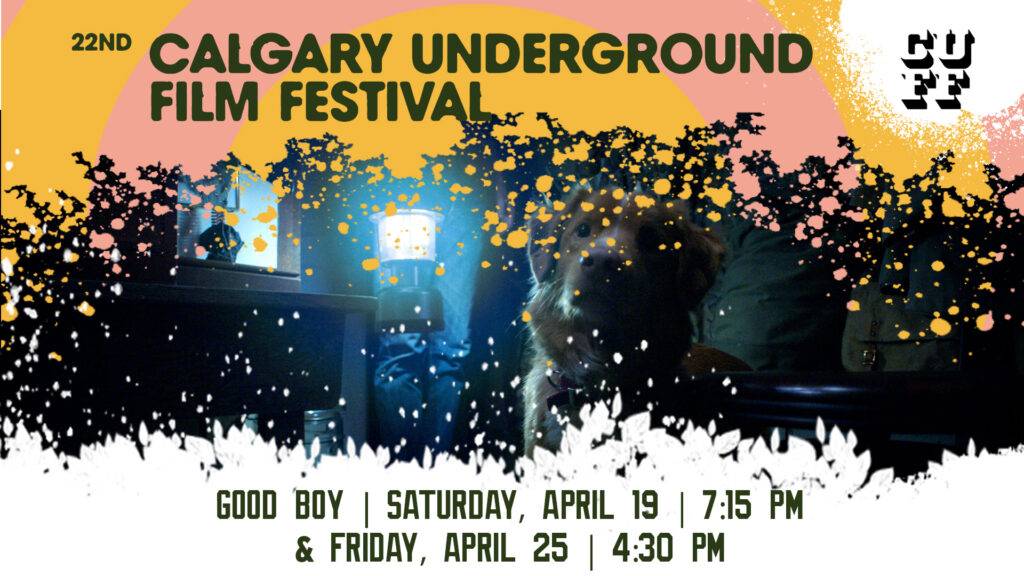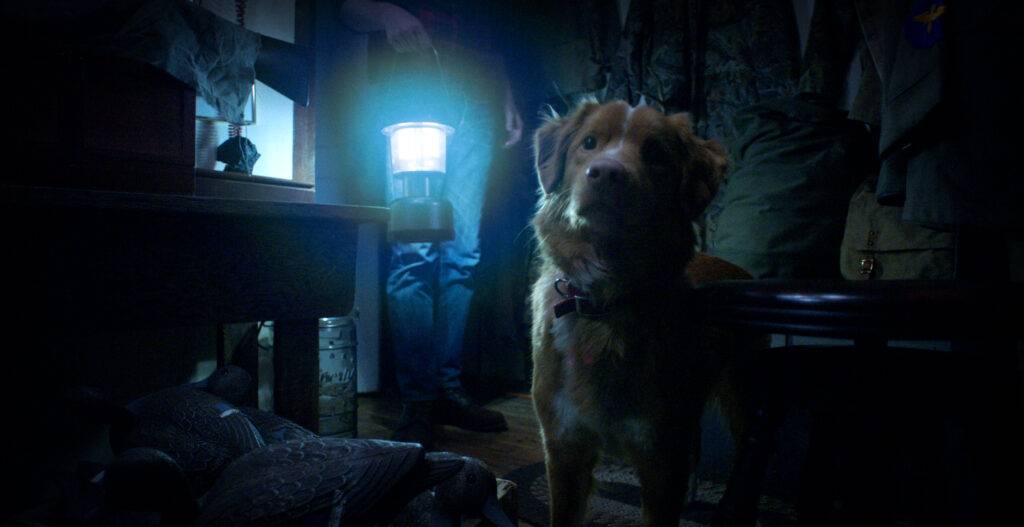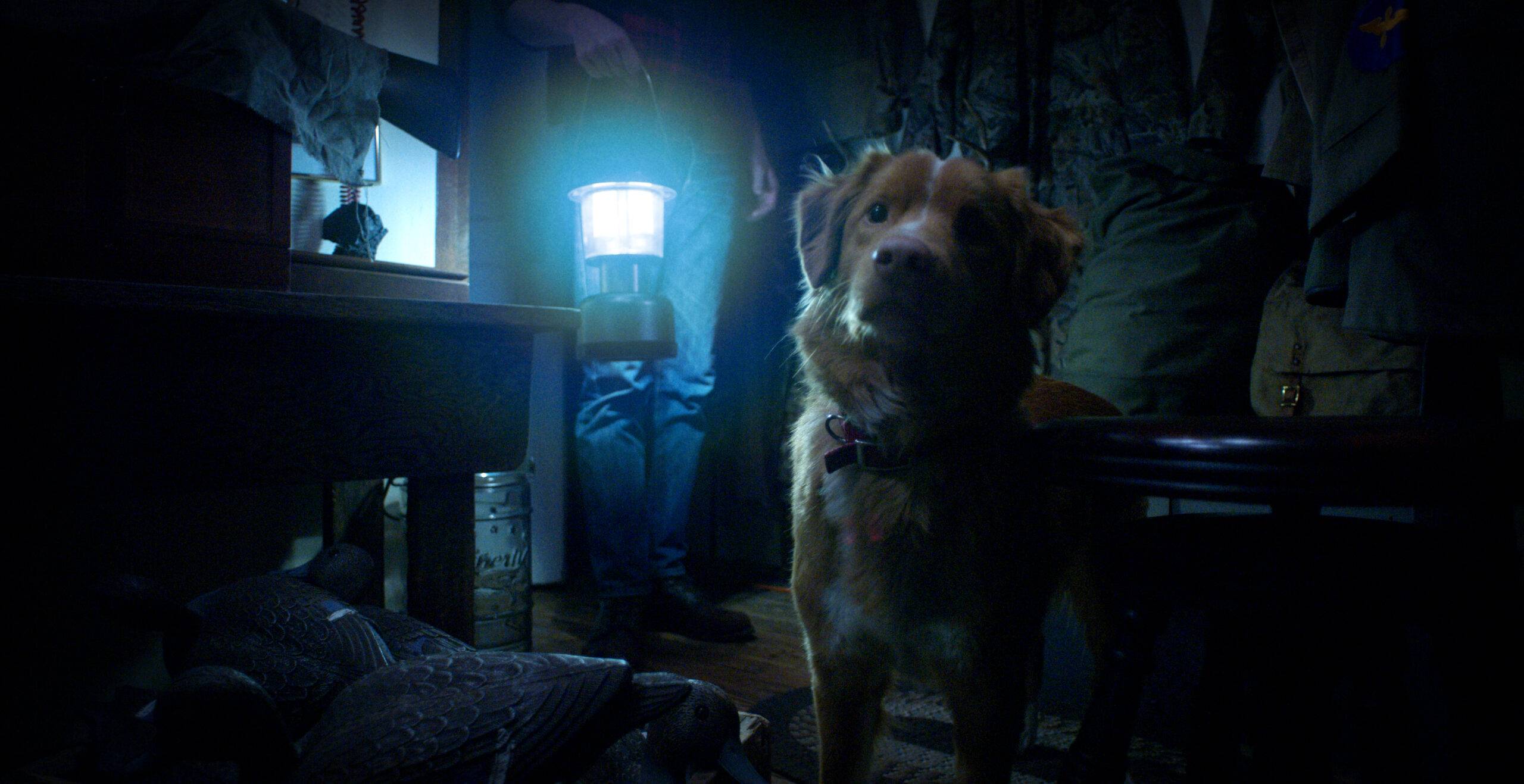Ben Leonberg Interview: Crafting GOOD BOY (2025), the Haunted‑House Thriller Your Dog Would Understand

Premiering the 2025 SXSW Film & TV Festival, Good Boy is a microbudget haunted house horror told from the perspective of a dog. Its premise is straightforward: Indy, a retriever with no supernatural abilities, must protect his human companion Todd from a presence only he can sense. What starts as a clever inversion of genre expectations evolves into something more affecting.
Ahead of its Canadian premiere at the Calgary Underground Film Festival, I spoke with writer‑director Ben Leonberg about the long road to making his debut feature, how working with his real‑life dog shaped the film, and why letting go of control was the only way forward.
Check out 10 Must-Watch Films at CUFF 2025
Tickets for Good Boy at CUFF 2025 Here
The Origins of Good Boy (2025)
For Leonberg, Good Boy began with a deceptively simple “what if”: What if the dog was the only one who knew the house was haunted? That premise, sparked while rewatching Poltergeist, soon merged with something more personal. “As a dog owner,” Leonberg told me, “you’ve probably wondered why your dog is staring into a corner. That was the origin.”
A longtime genre enthusiast, Leonberg is no stranger to difficult shoots or longform development. He earned his MFA in Directing from Columbia University, where he later taught for over five years, and now leads undergraduate film courses at Montana State University. After years of crafting shorts, VR projects, and commercials, Good Boy became his first feature – not despite its challenges, but because of them.
“The appeal,” he said, “was in figuring out how to have a suspenseful story told entirely from a realistic, canine perspective. No superpowers. No voiceover. Just the limitations of a household pet.”
Like The Shining, one of Leonberg’s influences, the film builds tension not through jump scares but through sustained unease – a creeping awareness that something is wrong, long before it becomes visible.
Indy as the “Leading Dog”

The idea stuck. The execution took time (over 400 shoot days spread across three years). “We made the movie akin to how you might make a documentary,” Leonberg said. “You’re following a subject over the course of years while they’re going about their life.” That subject, of course, was Indy – Leonberg’s own dog. Originally trained to be a pet, not a performer, Indy’s temperament dictated everything: schedule, pace, camera setups.
Leonberg began with proof‑of‑concept shorts, even recreating scenes from The Shining with Indy to test visual techniques. Eventually, one of those shorts earned Indy an acting nomination. “That forced our hand,” Leonberg admitted. From there, it became about building a film around what Indy could – and couldn’t – do, embracing the tension between structure and discovery.
Leonberg often describes Indy as a “static protagonist” – a character whose power lies not in arc or change, but in presence. “He’s as good and pure at the beginning as at the end,” Leonberg said. “We’re rooting for nothing bad to happen to him.” It’s a rare position in modern storytelling, but one that suits the film. From the first frame, the audience is on Indy’s side.
That empathy wasn’t manufactured. It was baked in, both through performance and process. On set, Leonberg and his wife Kari Fischer (also the film’s producer) kept things minimal. “Every extra person is another distraction,” he told me. “Indy might decide, ‘I better smell that guy.’” As a result, they often ran sound and camera themselves, building scenes around what Indy gave them.
It wasn’t about training tricks or hitting marks. It was about watching closely. Indy’s reactions, like his stillness or his gaze, became the emotional cues of the film. “I think his superpower is what might appear to be a blank stare in real life,” Leonberg said. On film, though, that stare opens up a space for projection. We see concern. We see confusion. We see fear.
The Cinematography of Good Boy (2025)
Leonberg storyboarded the film in broad strokes – mostly geometry and stick figures – to guide framing and lighting, knowing that Indy wouldn’t be able to hit marks or repeat movements like a human actor.
Though much of Good Boy unfolds in a single house, the film is visually dynamic. Leonberg, who served as both director and cinematographer, worked with wide‑angle lenses, low light, and handheld setups to reflect Indy’s point of view and physical scale.
“Some distortions that a super‑wide‑angle lens causes for humans actually work great for a dog,” he told me. “You can get beautiful close‑ups of Indy with a wide expanse of background.” That background – often darkened corners or partially lit thresholds – becomes a key part of the tension. Indy isn’t just in the frame. He’s framed against something that may or may not be there.
Leonberg also had to consider how a dog physically interacts with camera equipment. “Indy’s nose is always curious; he’d constantly boop the lens.” Keeping the camera footprint small also allowed him and Kari Fischer to run sound and image alone on closed sets. “The fewer people around, the more focused Indy was.”
Poltergeist and The Shining are probably my two personal favorite haunted‑house movies – Director Ben Leonberg on Film Influences for Good Boy
Lighting had to be equally adaptive. Much of the film is illuminated with a single practical source, like a lantern or a single flickering light. Vignetting creeps into the corners and compresses the frame. But through it all, Leonberg prioritizes keeping Indy’s eyes visible: “It gives the audience something to glom onto”.
Having worked in apparel advertising, Leonberg recalled a rule of thumb: “If someone has great hair, add backlight and they’ll look great.” Applied to a dog, he said with a laugh, “You can just add backlight and they look dynamite no matter what.”
Some of the most effective moments come from the ambiguity of perspective. At times, we see through Indy’s eyes. At others, the camera watches him – and it’s unclear whether we’re observing or following. “I loved toying with that,” Leonberg said. “Is this an objective shot of Indy walking out of the room – or is something watching him?”
At times, the film slips into something almost surreal – blurring memories, reality, and perception – but always in a way that feels grounded in Indy’s experience. There’s a standout moment – a character reflected in a dark TV screen – that quietly encapsulates the film’s restraint and precision.
Exploring Themes of Suffering and Powerlessness
The emotional core of Good Boy is about more than haunting. It’s about proximity to suffering. Dogs can sense when something’s wrong – illness, depression, absence. Leonberg uses that idea not as a plot device, but as the film’s emotional centre.
As Todd begins to unravel, Indy’s attempts to intervene feel increasingly futile. He barks, whines, tries to redirect his companion – but nothing changes. There’s no last‑minute save and no redemptive twist. We are forced to sit with Indy as he desperately tries to communicate his feelings of impending doom.
John Wick: the murder of a dog justifies thousands of deaths, and we’re like, yeah, that’s justice – Director Ben Leonberg on Our Empathy for Animals
Unlike your typical “dog” movie, Leonberg resists melodrama. There’s no voiceover, no cartoonish anthropomorphism. Indy is just a dog – and that’s what makes it work. “It’s funny,” Leonberg said. “But I think it’s almost empirically true that audiences feel more for animals than for human characters.” He’s not wrong. We want Indy to succeed. We want Todd to listen. And we know neither is fully in control.
As a result of this, Good Boy captures the painful space between knowing and powerlessness. Indy can sense what’s coming. He just can’t stop it.
Final Thoughts on Good Boy (2025)
Telling a horror story from a dog’s perspective isn’t a gimmick – at least not here. It’s a deliberate shift in empathy. Good Boy is modest in scale, but specific in feeling. It doesn’t rely on spectacle. It builds unease through closeness – to one location, to one relationship, to one pair of watchful eyes.
For all its challenges, Leonberg never tries to hide the film’s constraints. If anything, they shape the story’s sincerity. Good Boy is about what you notice when you’re quiet, what you sense before you understand, and what happens when love isn’t enough to stop death from its inevitable march.
*note* this is not the 2022 film, also named Good Boy, which involves someone dressing up as a dog… Indy is 100% a real dog*
Read More:




